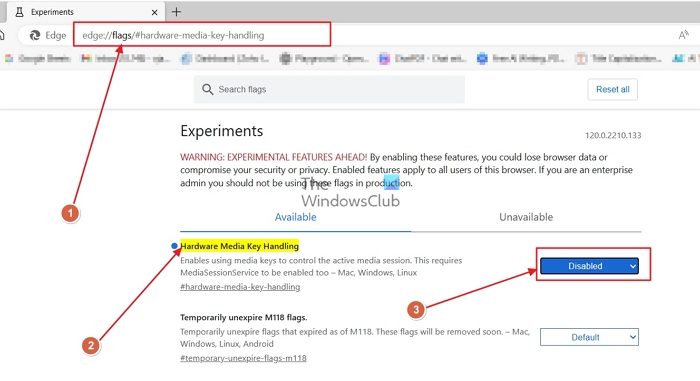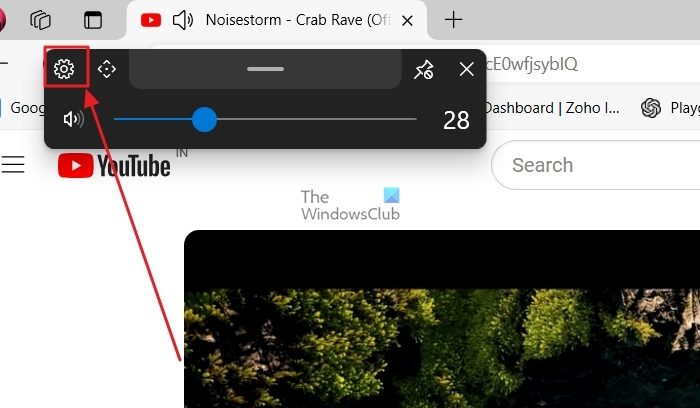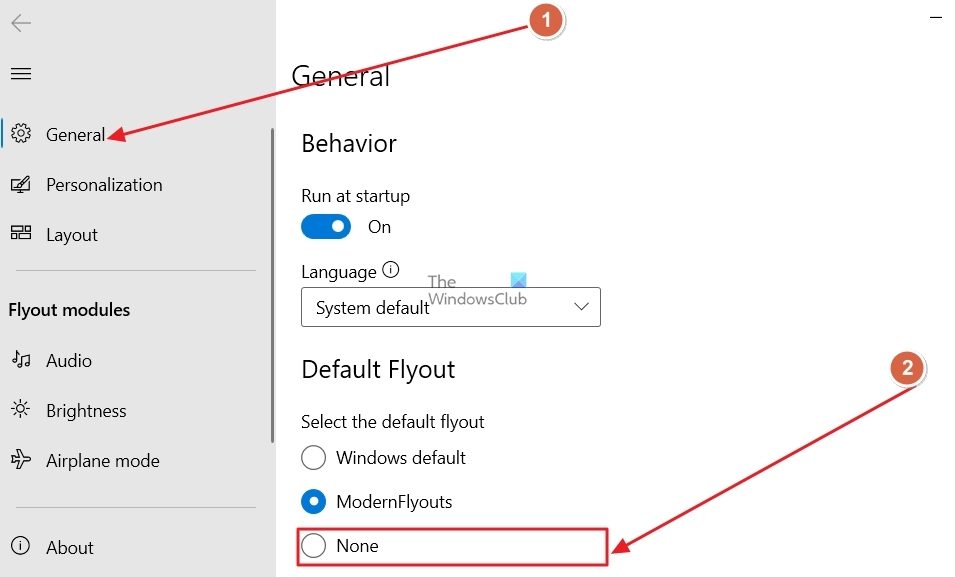Built into Windows 10, the Volume OSD gives you visual feedback for changing your PC’s volume. The Volume OSD is only triggered when the volume is getting changed with a keyboard shortcut or hotkey. There are three components to it:
- Volume Bar: A vertical slider representing volume percentage.
- Application Icon: The application icon is currently producing audio.
- Application Name: The name of the app producing audio.

How to remove Volume OSD floating in Windows 10
The Volume OSD in Windows 10 takes up huge screen space and can be incredibly frustrating when watching a video or game. This section will look at ways to remove Volume OSD floating in Windows.
- Disable banners in browsers
- Use Hide Volume OSD
- Use Modern Flyouts
1] Disable banners in browsers.
Chromium-based browsers like Edge and Chrome have flags that allow you to customize your browsing experience deeply. You can disable a specific flag to remove the Volume OSD floating in Windows:
- Open Edge or Chrome on your PC.
- In the address bar, paste the following:
For Edge:
Edge://flags/#hardware-media-key-handling
For Chrome:
chrome://flags/#hardware-media-key-handling
- Now, you will see a flag named Hardware Media Key Handling.

- Change the status of the flag from Default to Disabled.
This will disable the volume of OSD floating for the web browser. Follow any of the next two methods to disable the Volume OSD system-wide.
2] Use HideVolumeOSD app
HideVolumeOSD is a utility, as the name suggests, specifically designed to hide the Volume OSD floating in Windows. This tool sits at the system icon tray in the taskbar, and one click on the icon will disable or enable it:
- Download and extract the HideVolumeOSD zip.
- Once extracted, open the folder and click on the application for it to sit in the system tray.
![]()
- Now, click the icon whenever you want to disable the Volume OSD.
HideVolumeOSD works system-wide and allows you to disable or enable the feature at the click of a button. Once you open the application, it automatically adds itself to the startup apps, ensuring that it runs on startup and that the floating Volume OSD stays disabled. You can download Hide Volume OSD from Github
Read: Fix Windows Volume Mixer not saving settings
3] Use Modern Flyouts
Modern Flyouts modernizes the floating Volume OSD, making it more like the modern Windows 11. What this app also does is it allows you to customize and disable it. Here’s how to use it:
- Download and install Modern Flyouts from the Microsoft store.
- Once the application is installed, it will send an icon to the system icon tray when the flyout changes.
- Change the volume using the hotkey or a keyboard shortcut to toggle the settings.
- Now click the Settings icon in the Modern Flyout Volume OSD.

- This will open a new window. To turn Volume OSD off, select the Default Flyout as None.

The Run at startup toggle is on by default to ensure that the app settings are applied every time you log in to your PC. You can turn it off if you please. You can download ModernFlyouts from Github.
We hope that you found the article helpful and were able to remove the Volume OSD floating in Windows 10.
How do I fix the volume bar stuck on my screen?
It’s mostly a UI glitch, and you can quickly fix it by restarting the File Explorer using the Task Manager. Once the display refreshes, the volume bar will be gone.
How do I move the volume bar in Windows?
There is no way to move and rearrange the icons in the Windows system tray. However, you can choose what to keep and hide from Windows Settings.